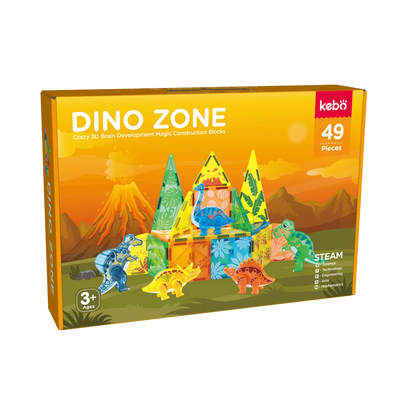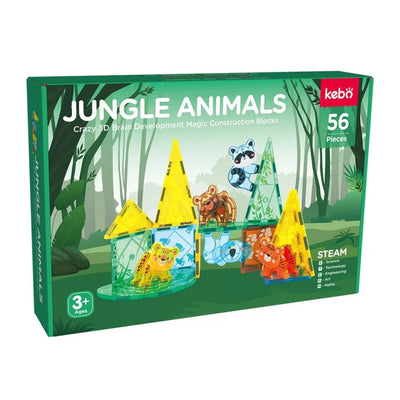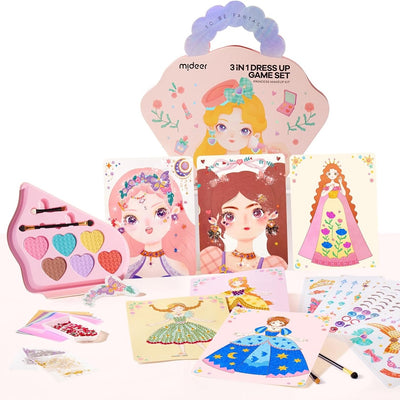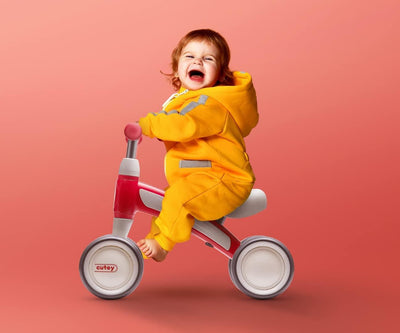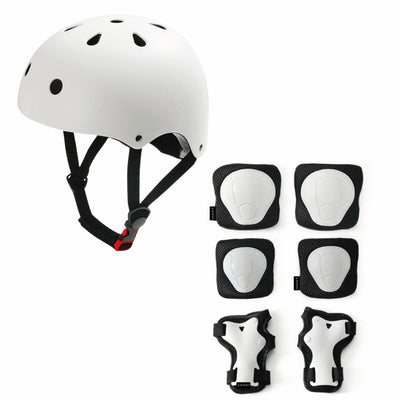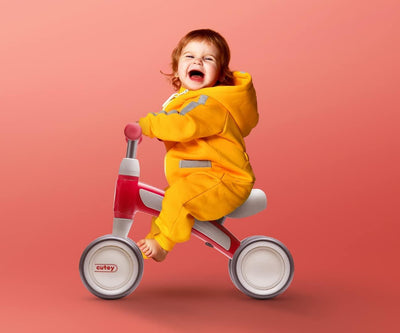I believe that for active Australian families like us, every Aus child likely owns at least one Balance Bike. The price, size, material, and even safety of children's balance bikes vary widely, and many articles about choosing children's balance bikes are repetitive and vague. Therefore, as a mother of two children living in Brisbane, I have summarized these key points and insights in the hope that they can help parents like me.
1. Choosing the Size

Do you find it complicated to measure the inseam and choose the right wheel size, as other buying guides or product descriptions suggest? BlaBlaBlaBla.... Forget about it! Just opt for a balance bike with an adjustable seat. Toddlers grow quickly, and their legs grow even faster. You don’t want to buy a bike that will only be suitable and comfortable for a few months.
However, if you persist to choose the balance bike based on the wheel size, please find the following instruction:
1.1 Wheel Size
- Baby (1 - 3 Years Old): Opt for 4 wheel bikes, like the Qplay Cutey Baby Bike $69 -$89 from Babycoo or Hape Baby Bike $119 from Babybunting
- Toddler (1.5 - 3.5 Years Old): A 9-inch (22.86cm) wheel size.
- Kids (2 - 4 Years Old): Choose a 10-inch -12 inch(25.4cm-30cm) wheel size, exemplified by the Tech Balance Bike from babycoo or 30cm Balance bike from Kmart.
|
Inseam (CM) |
Wheel Size |
Toddler Height |
Age |
Bike |
|
23 -- 26 cm |
8 - 9 inch (20.4 - 22.86cm) |
70 - 75 cm |
1-3 Y |
Cutey Baby Bike |
|
26 --32 cm |
9 - 10 inch (22.86 cm - 25.4cm) |
75 - 90 cm |
1.5 - 3.5 Y |
|
|
28 -- 40 cm |
10 - 12 inch (25.4 cm - 30.48cm) |
85 - 98 cm |
2 - 4 Y |
1.2 Seat Height - 👑 Balance Bike Sizes: SEAT HEIGHT IS KING! 👑
- The best way to determine the correct size of a balance bike is by knowing its seat height range.
- Therefore, when choosing the right size balance bike for your child, you must first determine the seat height they will need.
- This is done by measuring their inseam. The ideal balance bike seat height is typically determined by the child's inseam measurement. The formula to find the correct seat height is:
-
Seat Height = Inseam Length - 1 inch (2.5 cm)
This ensures that the child can sit on the bike with their feet flat on the ground, providing stability and confidence while learning to balance.
Ensure the bike has an adjustable seat height to accommodate your growing child and provide more comfortable balance biking.

2. Choosing the Material

The material of the balance bike plays a significant role in its durability and performance. Here are some materials to consider:
The size of the balance bike determines the comfort of the ride for the child, while the material of the bike not only affects the riding experience but also determines the quality and safety of the balance bike.
Among the many components of a balance bike, the frame and the tires are the most crucial.
2.1 Frame Material
The materials of balance bikes available on the market mainly include wood, steel, aluminum alloy, magnesium alloy, and composite materials like nylon fiberglass.
- Wooden balance bikes are relatively more environmentally friendly, but they are not as durable and are generally less popular. However, many wooden balance bike features 2 in 1 model, which provides more flexibility.

- Steel is the most widely used and historically longest-standing material in the bicycle manufacturing industry. Its advantages include high strength, durability, and low cost. However, it tends to rust and has a heavy frame, which is not very friendly for children who are beginners in balance biking.
- Aluminum alloy has the advantages of low density, good plasticity, and corrosion resistance. Specifically, 6061 aluminum alloy is not only lightweight but also strong and rust-resistant. It is generally used in high-end balance bikes, such as those from Velo and Qplay.
- Nylon fiberglass is a new type of composite material characterized by being inexpensive and lightweight. However, its impact resistance is poor, and it is not as strong as aluminum alloy.
Overall, when choosing a balance bike, it is recommended to opt for either aluminum alloy or wood, as they offer relatively better comprehensive performance.
2.2 Tire Material
The material and quality of the tires determine the stability and safety of the ride. The main types of balance bike tires available on the market are hard plastic, EVA foam, rubber & pneumatic.

Plastic Tires: Plastic tires are the lightest in weight but also the poorest in quality, generally suitable only for indoor use.
EVA Foam Tires: EVA foam tires are inexpensive and lightweight. However, being solid, they lack elasticity. On the plus side, they require no maintenance compared to pneumatic tires, as they do not leak air and are puncture-proof.
Rubber Tires: Rubber tires offer better traction and shock absorption than foam tires.
Air Tires: Air tires are filled with compressed air in an elastic chamber to cushion vibrations and impacts while riding. The downside is that air tires are heavier and require regular inflation. Shop 12 inch Air Tires Wheel for Racer Balance Bike
3. Paying Attention to Details

After considering the main structure and material of the balance bike, the next step is to look at the details. These details can be factors to consider when choosing a balance bike, but they are not all necessary. For example, whether or not the bike has brakes or steering limits should be decided based on your child’s riding needs.
3.1 Weight
In general, the lighter the balance bike, the more flexible it is, and the better control the child will have over it.
When selecting a balance bike, its weight should ideally not exceed 30% of the child’s body weight. For instance, a child weighing 30 pounds (approximately 13.6 kg) should use a balance bike that weighs less than 4.5 kg. Within the appropriate range, choosing the absolute lightest bike is not necessarily essential. For example, deciding between a bike that weighs 3.2 kg and one that weighs 3.8 kg can be done by considering other factors as well.
3.2 Craftsmanship
In addition to the frame material, the craftsmanship of the balance bike also varies. The main types are integrated and welded.
3.3 Steering Restriction
Most balance bikes do not have steering restrictions, meaning the handlebars can rotate 360 degrees. This design allows for more flexible and freer riding. However, for beginners, it can lead to tipping over if the handlebars are turned too sharply during a sudden turn.
Balance bikes with steering restrictions can limit the angle of handlebar rotation when the child is just starting to learn. This prevents accidental falls during sharp turns. Once the child has mastered the balance bike, the steering restriction can be removed to allow for more advanced riding.

3.4 Should a balance bike have a foot rest?
When a balance bike is gliding, children will instinctively lift their feet. The purpose of the footrests is to provide a place for children to rest their feet while gliding or making sharp turns at speed. Photo: Trainer Balance Bike with Footrest

3.5 Are brakes beneficial for a balance bike or not?
Do you have the same question like me as above. The answer is here: Most balance bikes do not come with brakes because young children do not have enough hand strength or hand-eye coordination. At the beginner stage, using their feet to stop is sufficient.
Children over 3.5 years old begin to develop adequate hand-eye coordination. If they can ride a balance bike proficiently, introducing a handbrake can be beneficial. It allows for quicker and safer stops and prepares them for riding a traditional bicycle.
3.6 Handlebars & Screws
The handlebars of a balance bike should be non-slip and have rubber grips with end stops. This design ensures that when the bike hits obstacles like walls or trees, the rubber ends of the handlebars protect the child’s hands.
3.7 Warranty
All Balance Bike purchased from Babycoo will enjoy 1 year of warranty from manufacturing defects.
4. What Age is Best for a Balance Bike?
Typically, a Balance Bike is an excellent tool for children between 18 months and 5 years old to develop their balance and coordination skills. These pedal-less bikes allow young riders to focus on balancing while propelling themselves forward using their feet. Most toddlers can start using a balance bike once they can walk steadily and sit with their feet flat on the ground. Balance bikes help children gain confidence and improve their motor skills, making the transition to a pedal bike smoother and easier. They are designed with safety in mind, featuring lightweight frames and adjustable seats, ensuring a comfortable and secure ride for your little one
